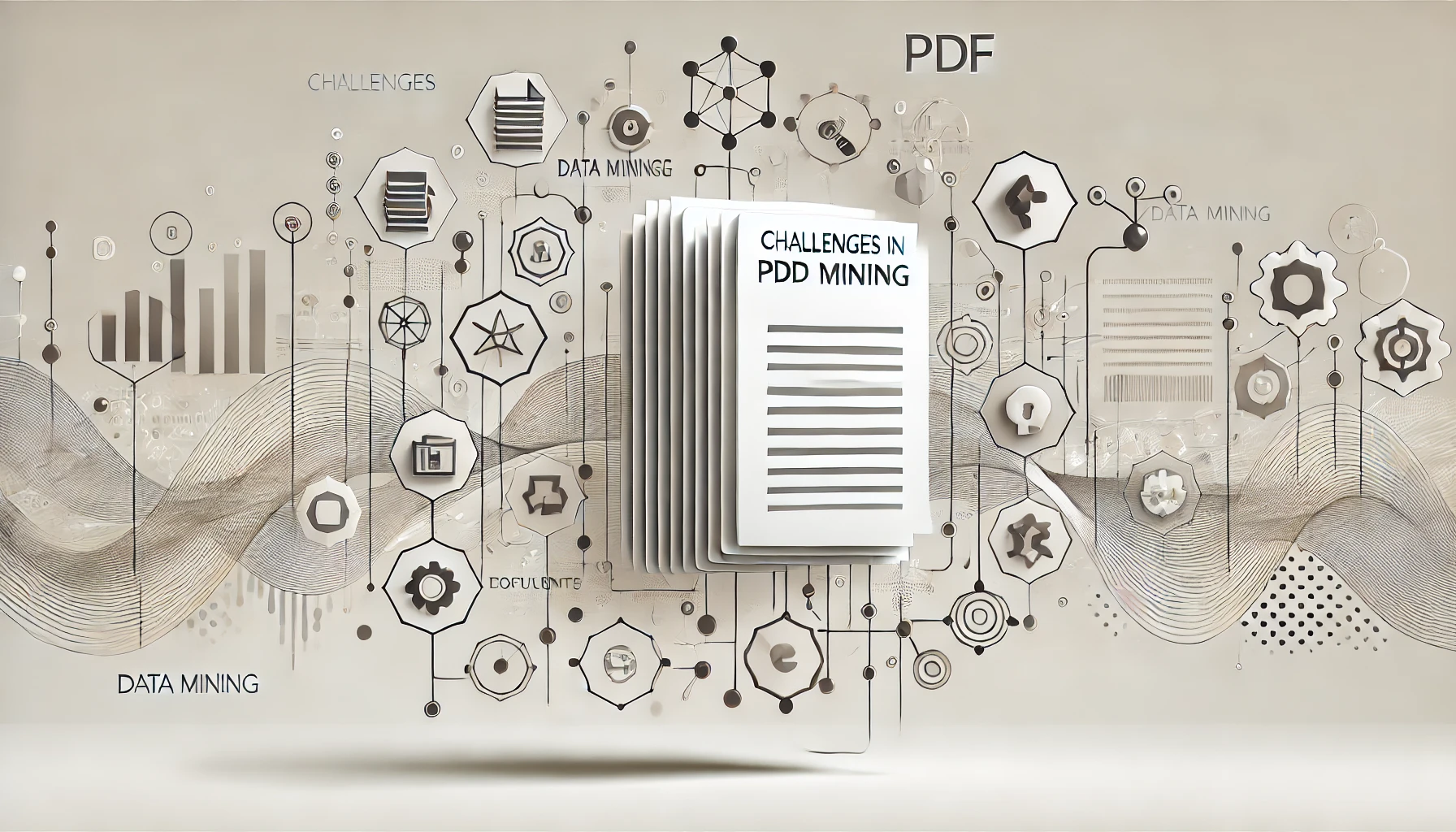As you navigate the intricate landscape of PDF data mining and machine learning, the amalgamation of diverse methodologies like text classification, named entity recognition, sentiment analysis, and topic modeling offers a multifaceted approach to unraveling the complexities of textual data. These 12 comprehensive approaches to PDF Data Mining and Machine Learning scratch the surface and delve into the depths of data mining possibilities, providing a robust foundation for extracting valuable insights and shaping informed decision-making processes. Each technique serves as a unique piece in the puzzle, contributing to the holistic understanding of PDF data mining and machine learning intricacies.
Text Classification
When it comes to text classification in the realm of PDF data mining and machine learning, the primary objective is to categorize textual information into predefined classes based on the content and context of the text. Text summarization plays a crucial role in this process by condensing large amounts of text into concise summaries, aiding in the categorization of documents. Keyword extraction techniques are employed to identify and extract the most relevant terms from the text, which further assists in document categorization by highlighting key themes and topics.
Document categorization involves assigning labels or tags to documents based on their content, enabling easier retrieval and organization of information. Document summarization complements this process by generating brief summaries of entire documents, providing a quick overview of the main points without the need to read the entire text. By combining text summarization, keyword extraction, document categorization, and document summarization techniques, text classification in PDF data mining and machine learning becomes more efficient and effective in organizing and understanding vast amounts of textual data.
Named Entity Recognition
Named Entity Recognition (NER) is a fundamental task in natural language processing that involves identifying and classifying named entities within textual data. The accuracy of entity recognition is crucial for downstream tasks like information retrieval, question answering, and document summarization. Achieving high entity recognition accuracy often depends on the ability to handle a wide range of entity extraction challenges. These challenges include entity ambiguity, where an entity can have multiple meanings depending on the context, and entity variation, where the same entity can be expressed in different ways. Additionally, entity recognition accuracy can be affected by noisy text, misspellings, and the presence of new or rare entities in the data. Overcoming these entity extraction challenges requires robust algorithms and models that can generalize well across different datasets and adapt to variations in entity expressions. Researchers continue to explore innovative approaches to improve entity recognition accuracy and address the complexities of entity extraction challenges in natural language processing tasks.
Sentiment Analysis
What factors contribute to the accuracy and effectiveness of sentiment analysis in natural language processing? Sentiment analysis, also known as opinion mining, aims to determine the emotional tone behind a piece of text. Emotion detection plays a crucial role in sentiment analysis by identifying sentiments such as happiness, anger, sadness, or excitement within text data. The accuracy of sentiment analysis heavily relies on the quality and diversity of the training data used to develop the sentiment analysis model. A well-annotated dataset that covers a wide range of sentiments and contexts enhances the model’s ability to accurately classify emotions in text.
Additionally, the choice of algorithms for sentiment analysis can significantly impact its effectiveness. Machine learning algorithms like Support Vector Machines (SVM), Naive Bayes, or Recurrent Neural Networks (RNNs) are commonly used for sentiment analysis tasks. These algorithms can be fine-tuned and optimized to improve the accuracy of sentiment classification. Furthermore, pre-processing techniques such as text normalization, removing stop words, and handling negations are essential steps to ensure the text is appropriately processed before sentiment analysis.
Topic Modeling
When delving into the realm of topic modeling, understanding concepts like topic coherence and latent semantic analysis is crucial. Topic coherence measures the interpretability and meaningfulness of topics generated by models, ensuring they align with human understanding. Latent semantic analysis helps uncover hidden relationships between words and topics, offering a deeper understanding of the underlying structure within textual data.
Topic Coherence
To delve into the realm of Topic Coherence within the context of Topic Modeling, it is essential to understand how this metric plays a crucial role in evaluating the quality and interpretability of topics generated by machine learning algorithms. Topic coherence evaluation is a method used to measure the semantic similarity between high-frequency terms within a topic. This metric helps in determining how coherent and interpretable a topic is by analyzing the relationships between words. Data integration techniques are often employed to enhance topic coherence by combining information from different sources or modalities. By improving the consistency and relevance of terms within a topic, data integration can lead to more meaningful and actionable insights extracted from text data. Researchers and practitioners rely on topic coherence scores to assess the performance of topic modeling algorithms and fine-tune parameters for optimal results. Ultimately, understanding and leveraging topic coherence is instrumental in extracting valuable knowledge from large text datasets efficiently.
Latent Semantic Analysis
Latent Semantic Analysis, a technique in Topic Modeling, involves analyzing relationships between terms in a corpus to uncover underlying semantic structures. By utilizing singular value decomposition, LSA maps terms and documents into a latent semantic space where the semantic similarity between terms and documents can be measured. This method is particularly useful for document summarization, where it can identify the most relevant and representative terms to create concise summaries.
LSA operates on the assumption that words that are semantically similar will appear in similar pieces of text. By capturing these relationships, LSA can identify patterns that represent the underlying semantics of the text. Through dimensionality reduction, LSA can reveal the latent structure in the data, enabling the extraction of meaningful information.
Information Extraction
To begin the discussion on Information Extraction, you must first explore Text Extraction Techniques that are crucial for extracting relevant information from PDF documents. Data Preprocessing Methods play a vital role in cleaning and transforming raw text data into a format suitable for machine learning algorithms. Additionally, Feature Selection Strategies are essential for identifying and selecting the most relevant features from the extracted data to improve model performance and accuracy.
Text Extraction Techniques
Utilizing advanced text extraction techniques is essential in the realm of information extraction for PDF data mining and machine learning. Image conversion plays a crucial role in extracting text from PDFs that contain scanned documents or images. By converting these images into text format, the content becomes accessible for further analysis and processing. OCR integration, which stands for Optical Character Recognition, is a key technology used to recognize and extract text from images or scanned documents.
OCR integration involves the use of algorithms to identify characters within an image and convert them into machine-readable text. This process enables the extraction of text data from PDFs that are not text-searchable, allowing for deeper analysis and insights. Implementing OCR integration in text extraction techniques significantly enhances the efficiency and accuracy of information extraction for PDF data mining and machine learning applications. By leveraging image conversion and OCR integration, researchers and data scientists can unlock valuable insights from unstructured PDF documents, contributing to more informed decision-making and advanced analytical capabilities.
Data Preprocessing Methods
Data preprocessing methods play a critical role in information extraction for PDF data mining and machine learning applications. Data cleaning involves identifying and correcting errors or inconsistencies in the dataset to improve its quality. It includes handling missing values, removing duplicates, and addressing outliers that could negatively impact the accuracy of the machine learning models. Data normalization, on the other hand, standardizes the feature scales to a specific range, preventing certain features from dominating others during the model training process. This step ensures that all features contribute equally to the learning process, leading to better model performance. By applying data preprocessing methods like cleaning and normalization before feeding the data into machine learning algorithms, you enhance the quality and reliability of the extracted information. These techniques lay the groundwork for more advanced analyses and contribute to the overall success of PDF data mining and machine learning endeavors.
Feature Selection Strategies
Implementing effective feature selection strategies is crucial for optimizing the information extraction process in PDF data mining and machine learning tasks. Feature selection involves choosing the most relevant attributes to improve model performance and reduce computational complexity. Here are three key strategies to consider:
- Feature Importance: Assessing the significance of each feature in relation to the target variable helps prioritize attributes that contribute most to the model’s predictive power. Techniques like Random Forest feature importance or Recursive Feature Elimination can aid in this process.
- Dimensionality Reduction: Reducing the number of features can enhance model interpretability and generalization while minimizing the risk of overfitting. Methods such as Principal Component Analysis (PCA) or t-Distributed Stochastic Neighbor Embedding (t-SNE) are commonly used for dimensionality reduction.
- Regularization Techniques: Regularization methods like Lasso or Ridge regression can penalize the inclusion of irrelevant features, encouraging sparsity in the feature space and promoting a more efficient model. These techniques help combat multicollinearity and improve model robustness.
Document Clustering
Through document clustering, you can organize a large corpus of text documents into meaningful groups based on their similarities. Cluster analysis is a fundamental technique in this process, where documents are grouped together if they share common features or characteristics. Document similarity plays a crucial role in determining how closely related two documents are within a cluster.
In document clustering, the goal is to group together documents that are similar in content or context, allowing for easier navigation and retrieval of information. This technique can help in information organization, topic discovery, and summarization of large document collections. By analyzing the textual content and patterns within the documents, clustering algorithms can efficiently categorize them into distinct clusters.
Document clustering algorithms such as K-means, Hierarchical Clustering, and DBSCAN are commonly used in this process. These algorithms employ various similarity metrics, such as cosine similarity or Jaccard index, to determine the closeness of documents within clusters. Through effective document clustering, large volumes of text data can be managed, analyzed, and understood more efficiently.
Pattern Recognition
Recognizing patterns in data is a critical aspect of data analysis and machine learning. In the realm of pattern recognition, two key components play a significant role: image recognition and data segmentation. Here’s how these aspects contribute to the process:
- Image Recognition: This involves identifying and interpreting patterns within images. Through techniques like convolutional neural networks (CNNs), features in images are detected and classified, enabling applications such as facial recognition or object detection.
- Data Segmentation: Data segmentation involves dividing datasets into meaningful segments or clusters based on similarities. This process is crucial for tasks like image segmentation in medical imaging, where different tissues need to be identified for accurate diagnoses.
- Pattern Matching: By comparing patterns in data to known templates, machine learning algorithms can recognize and categorize new information efficiently.
These components collectively enhance the accuracy and efficiency of pattern recognition systems, benefiting various fields from healthcare to autonomous driving.
Predictive Modeling
Moving from the realm of pattern recognition to predictive modeling, the focus shifts towards leveraging patterns identified in data to forecast future outcomes. Predictive modeling involves the use of statistical techniques like regression analysis and time series forecasting to make predictions based on historical data trends. Regression analysis helps in understanding the relationship between variables and predicting a continuous outcome, such as sales figures based on marketing spend. Time series forecasting, on the other hand, deals with predicting future values based on past data points that are ordered chronologically, like predicting stock prices or weather conditions.
In predictive modeling, the aim is to build models that can accurately predict future events or trends. These models are trained on historical data, tested for accuracy, and then used to make predictions on new data. By utilizing regression analysis and time series forecasting, businesses can make informed decisions, anticipate market changes, optimize resource allocation, and improve overall operational efficiency. The power of predictive modeling lies in its ability to transform data into actionable insights, enabling organizations to proactively plan for the future.
Data Visualization
To effectively convey complex patterns and trends in data, data visualization plays a crucial role in presenting information in a visually digestible format. Utilizing various data visualization techniques can help you uncover insights that might otherwise remain hidden in raw datasets. Interactive dashboards enhance the user experience by allowing for dynamic exploration of data. Here are three key aspects to consider:
- Graphical Representations: Utilize graphs, charts, and maps to represent data visually, making it easier for you to identify patterns and outliers at a glance.
- Color Coding: Incorporate color gradients to encode additional information in your visualizations, aiding in understanding complex relationships within the data.
- User Interaction: Implement interactive features in your dashboards to enable users to drill down into specific data points, filter information, and customize their viewing experience, enhancing engagement and facilitating deeper analysis.
Deep Learning Applications
Deep learning applications revolutionize the way complex patterns and relationships within data are understood and utilized. In image recognition, deep learning models such as Convolutional Neural Networks (CNNs) have shown remarkable accuracy in tasks like object detection and facial recognition. These models learn hierarchical representations of data, enabling them to identify intricate patterns within images.
Anomaly detection is another area where deep learning excels. By training models on normal data patterns, they can effectively detect anomalies or outliers in new data. This is crucial in various fields like cybersecurity, where identifying unusual network activity can prevent security breaches.
Deep learning’s ability to automatically learn features from data makes it particularly suitable for tasks that involve large amounts of unstructured data, such as images. Leveraging neural networks, deep learning applications can uncover insights and patterns that might be challenging for traditional machine learning algorithms to detect. As technology continues to advance, the potential applications of deep learning in image recognition and anomaly detection are vast and continuously evolving.
Natural Language Processing
When it comes to Natural Language Processing in the context of PDF data mining and machine learning, text preprocessing techniques play a crucial role in cleaning and organizing textual data for further analysis. Sentiment analysis algorithms are utilized to determine the sentiment or opinion expressed in a piece of text, allowing for more nuanced insights and decision-making. These components are fundamental in extracting meaningful information from unstructured text data, enabling more sophisticated analysis and model development.
Text Preprocessing Techniques
Text preprocessing techniques in natural language processing play a crucial role in the success of data mining and machine learning tasks. Properly cleaned and normalized text data is essential for accurate analysis and model training. Here are three key steps involved in text preprocessing:
- Data Cleaning: Removing irrelevant information, such as special characters, punctuation, and stop words, helps improve the quality of the text data. This step ensures that the dataset is free of noise, making it easier for algorithms to extract meaningful patterns.
- Text Normalization: Standardizing text by converting all characters to lowercase, handling contractions, and stemming or lemmatizing words reduces variations in the text data. This process ensures consistency in the representation of words, aiding in better feature extraction and analysis.
- Tokenization: Breaking down text into smaller units like words or sentences enables algorithms to process and analyze text data effectively. Tokenization is a fundamental step in text preprocessing that facilitates further analysis and modeling tasks.
Sentiment Analysis Algorithms
Utilizing natural language processing techniques, sentiment analysis algorithms play a pivotal role in extracting emotions and opinions from textual data. The accuracy of sentiment analysis algorithms is crucial for various applications, including social media monitoring, customer feedback analysis, and brand reputation management. These algorithms employ machine learning models to classify text as positive, negative, or neutral sentiments based on the language used.
To enhance sentiment analysis accuracy, algorithms often utilize techniques like n-gram analysis, sentiment lexicons, and deep learning approaches such as recurrent neural networks (RNNs) and convolutional neural networks (CNNs). These methods help capture the context and nuances of language, leading to more precise sentiment classification.
In real-world scenarios, sentiment analysis algorithms are employed to analyze product reviews, social media posts, and customer surveys to gauge public opinion and sentiment towards specific topics or brands. By accurately interpreting textual data, these algorithms enable organizations to make informed decisions and respond effectively to customer feedback.
Frequently Asked Questions
How Can PDF Data Mining Be Applied to Medical Research?
You can utilize PDF data mining in medical research by extracting insights from clinical trials. This data can aid in disease diagnosis through pattern recognition and predictive analytics, offering valuable information to improve patient outcomes and advance medical knowledge.
Are There Any Ethical Considerations in PDF Data Mining?
When engaging in PDF data mining, ethical implications and privacy concerns are paramount. You must consider the potential risks of extracting sensitive information from documents. Safeguarding data integrity and respecting individuals’ privacy are crucial aspects to address.
What Are the Limitations of Using Machine Learning in PDF Data Mining?
When diving into PDF data mining with machine learning, challenges arise. Limitations like data quality, text extraction accuracy, and model interpretability can hinder progress. Solutions involve refining algorithms, enhancing data preprocessing, and promoting transparency.
How Can PDF Data Mining Help in Fraud Detection and Prevention?
PDF data mining can enhance fraud detection in the financial sector by analyzing transaction records, identifying patterns indicative of fraudulent activities. By leveraging machine learning algorithms for anomaly detection, you can strengthen cybersecurity applications and preempt potential threats.
Are There Any Regulatory Challenges in Using PDF Data Mining for Sensitive Information?
Regulatory compliance poses challenges in utilizing PDF data mining for sensitive data. Data privacy mandates like GDPR require meticulous handling. Non-compliance risks severe penalties. Awareness and adherence to evolving regulations are crucial for successful implementation.



